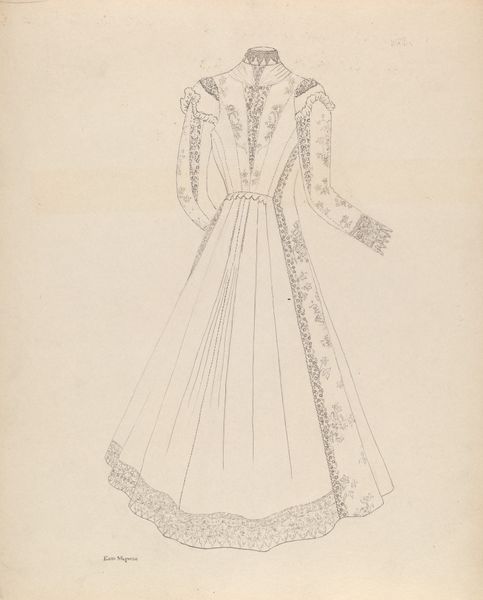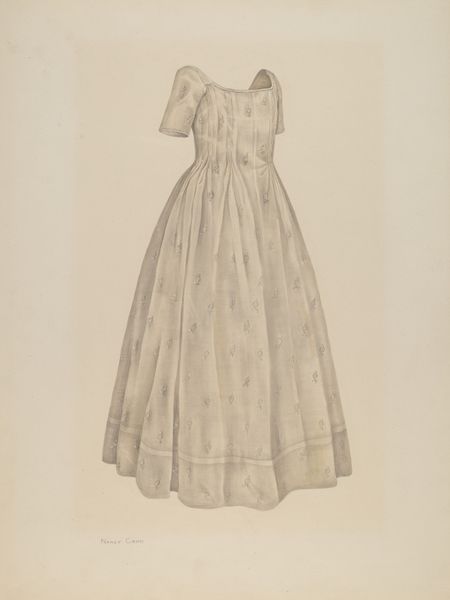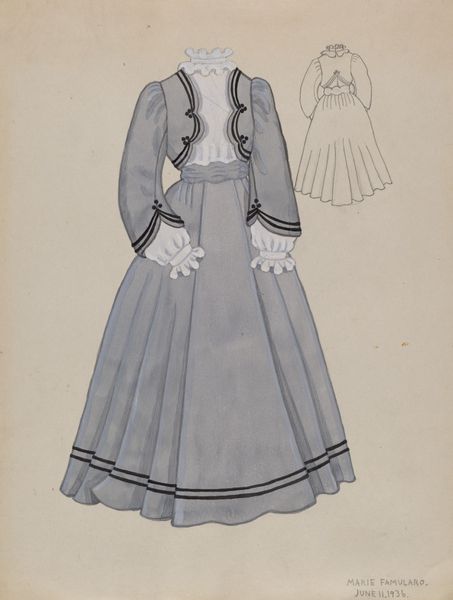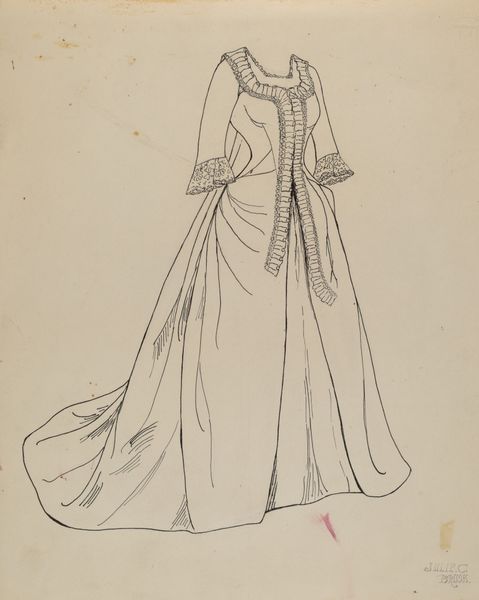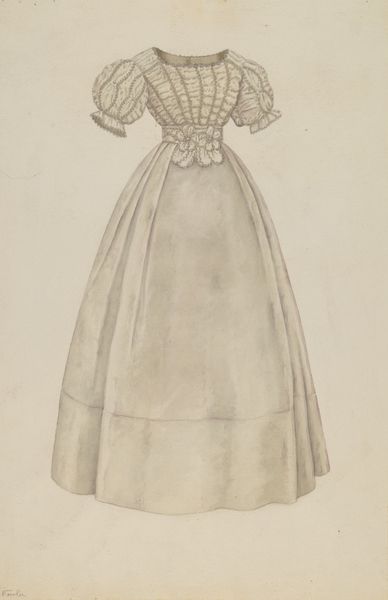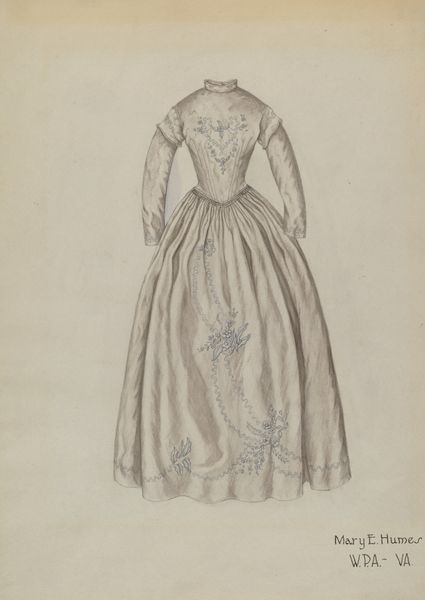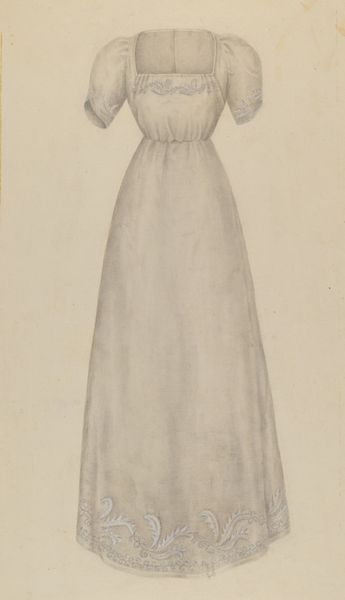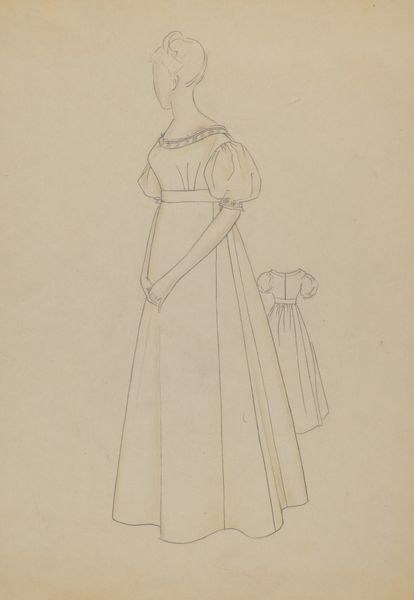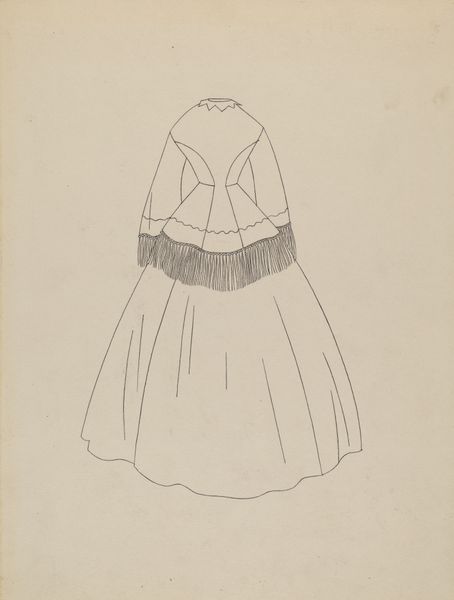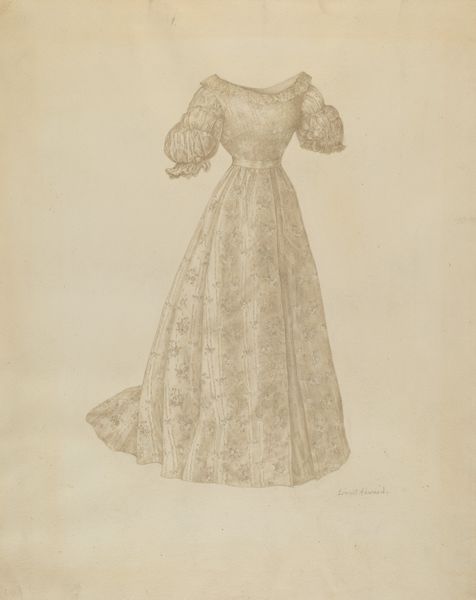
drawing, pencil
drawing
light pencil work
quirky sketch
fashion mockup
figuration
personal sketchbook
historical fashion
character sketch
pencil
line
sketchbook drawing
decorative-art
fashion sketch
sketchbook art
clothing design
Dimensions: overall: 37 x 28.6 cm (14 9/16 x 11 1/4 in.)
Copyright: National Gallery of Art: CC0 1.0
Curator: It looks like a phantom garment, suspended in air. Rather melancholic, don’t you think? Editor: Indeed. What we’re viewing is a pencil drawing entitled "Dress" by Julie C. Brush, circa 1940. It's deceptively simple at first glance, isn’t it? The lines are clean and spare. Curator: Precisely. The linework has a distinct quality, a precision that seems to delineate form perfectly. The artist focused quite a bit on the play of verticality against the flared base. One might read it structurally as a meditation on containment, that torso section above a cascade of folds. It's quite beautiful in its architectural rigor. Editor: And considering its place within the context of the time, perhaps this piece represents something larger than just a simple fashion sketch. Wartime restrictions impacted textiles significantly, altering fashion ideals and silhouettes. A design like this may have represented hope, luxury, or even a longing for a bygone era. This wasn't just a personal sketchbook rendering; it reflects historical shifts in aesthetics shaped by social realities. Curator: Intriguing! The interplay between that detailed, ornate sleeve trim and the rest of the stark composition is particularly arresting, an interplay between the ideal and its more constrained reality. Almost baroque, that lace detailing. It draws the eye and almost serves as a focal point. Editor: It's an engaging work to consider through varied historical lenses, and you've successfully teased out several ways to engage formally, Curator. The impact of fashion trends is more telling now. Curator: Agreed, that element alone suggests much. It showcases a convergence of style and design, something more than fashion alone. Editor: It has certainly opened up areas I hadn’t initially anticipated. Thanks for a productive discussion!
Comments
No comments
Be the first to comment and join the conversation on the ultimate creative platform.
